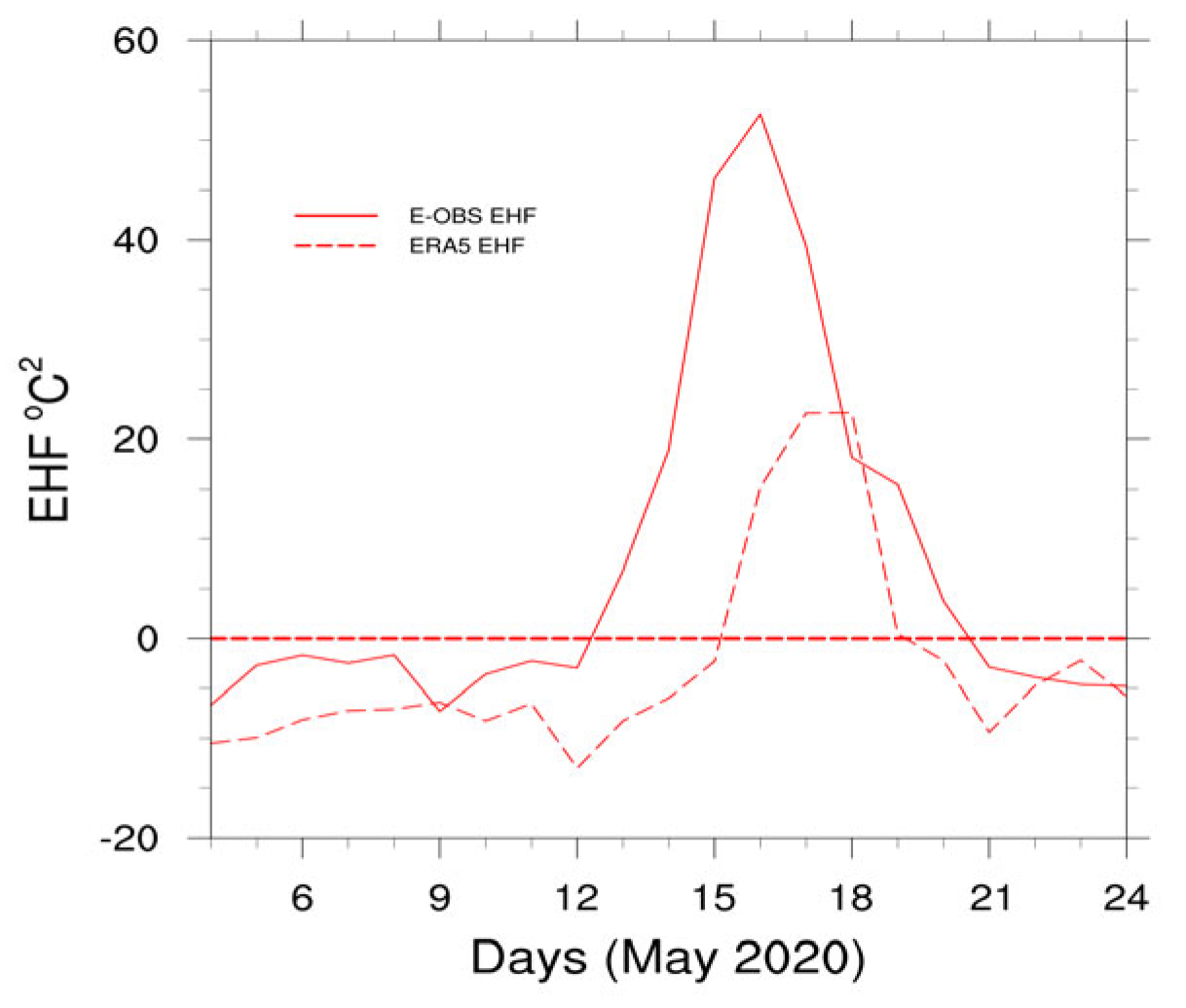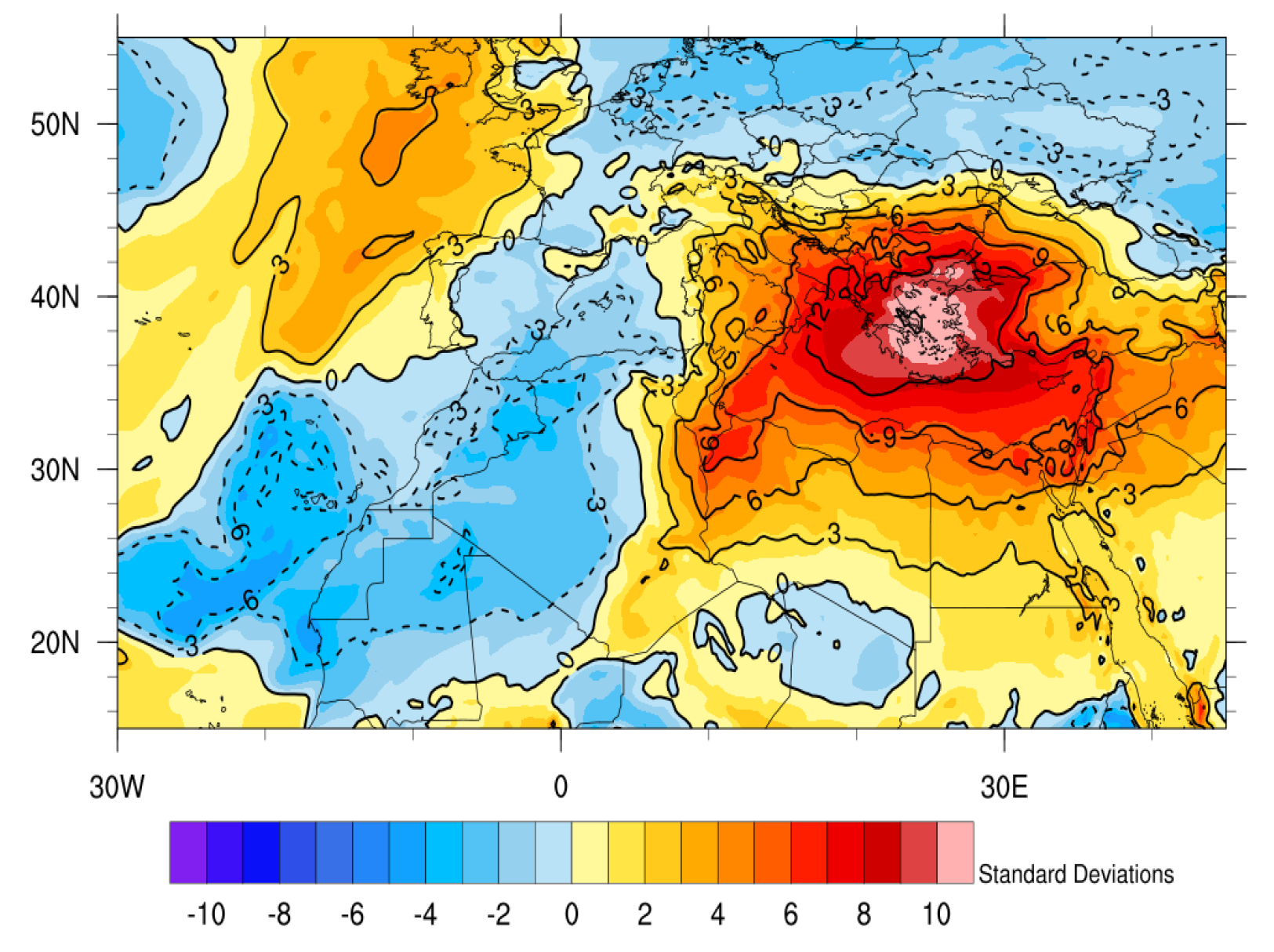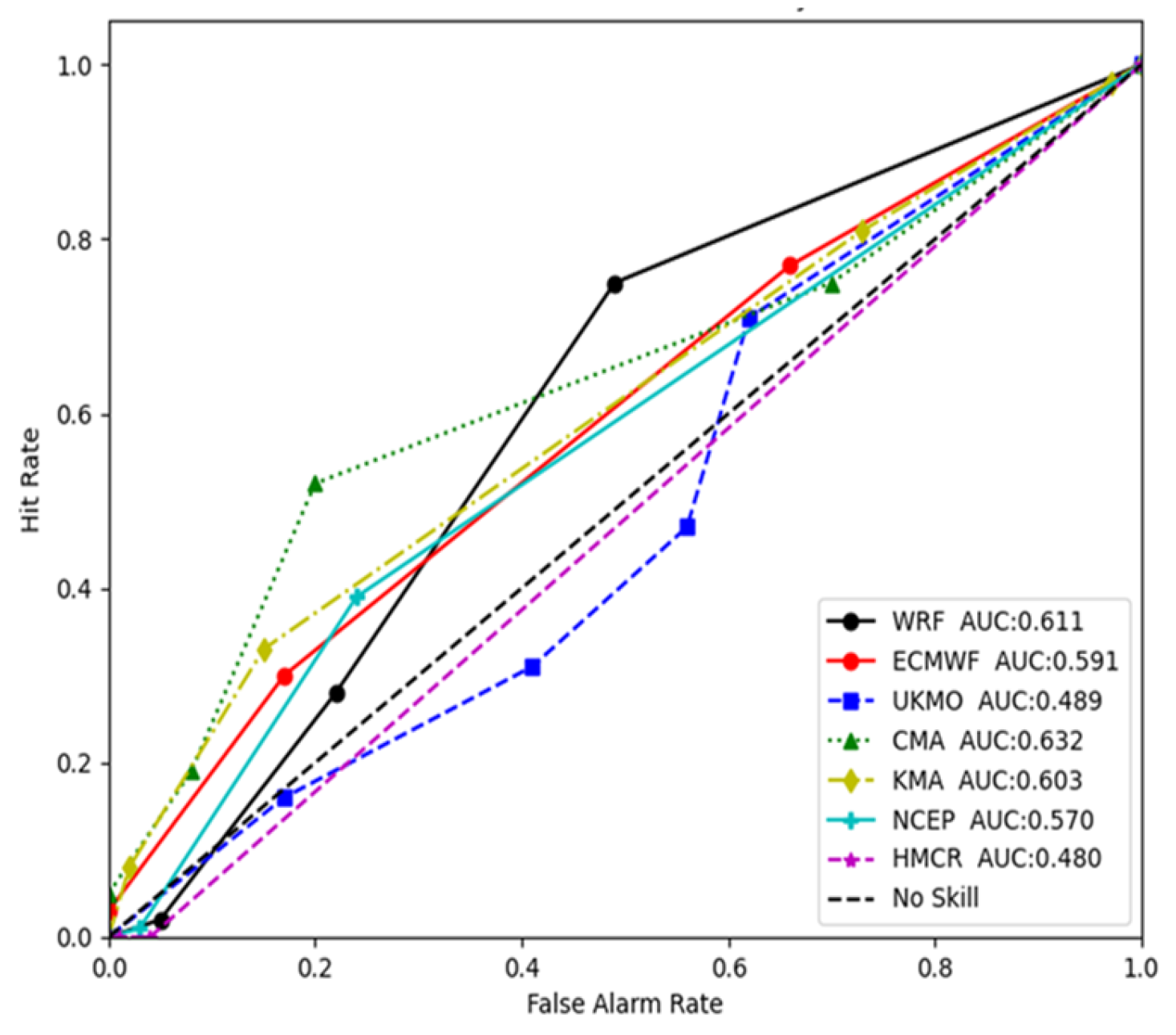Subseasonal-to-Seasonal Predictability Assessment of an Early Heat Wave in the Eastern Mediterranean in May 2020 †
Abstract
:1. Introduction
2. Materials and Methods
2.1. Data
2.2. Methodology
2.2.1. WRF Simulations
2.2.2. Excess Heat Factor
2.2.3. Predictability Scores
3. Results
3.1. Synoptic Analysis
3.2. Predictability
4. Conclusions
Author Contributions
Funding
Institutional Review Board Statement
Informed Consent Statement
Data Availability Statement
Conflicts of Interest
References
- Ford, T.W.; Dirmeyer, P.A.; Benson, D.O. Evaluation of Heat Wave Forecasts Seamlessly across Subseasonal Timescales. Npj Clim. Atmos. Sci. 2018, 1, 20. [Google Scholar] [CrossRef]
- Vitart, F.; Robertson, A.W. The Sub-Seasonal to Seasonal Prediction Project (S2S) and the Prediction of Extreme Events. Npj Clim. Atmos. Sci. 2018, 1, 1–7. [Google Scholar] [CrossRef]
- Vitart, F.; Ardilouze, C.; Bonet, A.; Brookshaw, A.; Chen, M.; Codorean, C.; Déqué, M.; Ferranti, L.; Fucile, E.; Fuentes, M.; et al. The Subseasonal to Seasonal (S2S) Prediction Project Database. Bull. Am. Meteorol. Soc. 2017, 98, 163–173. [Google Scholar] [CrossRef]
- Nairn, J.R.; Fawcett, R.J.B. The Excess Heat Factor: A Metric for Heatwave Intensity and Its Use in Classifying Heatwave Severity. Int. J. Environ. Res. Public Health 2015, 12, 227–253. [Google Scholar] [CrossRef] [PubMed]
- Kueh, M.-T.; Lin, C.-Y. The 2018 Summer Heatwaves over Northwestern Europe and Its Extended-Range Prediction. Sci. Rep. 2020, 10, 19283. [Google Scholar] [CrossRef] [PubMed]



| Name | Centers | Spatial Resolution | Temporal Resolution | |
|---|---|---|---|---|
| WRF Simulations | CFSv2 | NCEP | 25 km | 3 h |
| Existing S2S Forecasts | S2S Database | ECMWF, NCEP, UKMO, CMA, KMA, HMCR | 1.5° | Mondays and Thursdays or Daily (00UTC) |
| Reanalysis | ERA5 and ERA5-Land | ECMWF | 0.25° 0.1° | Hourly |
| Climatic Parameters | E-OBS and Weather Stations | ECA&D, NOA and NCDC | 0.1° (E-OBS) and Pinpoint Observations | Daily |
Disclaimer/Publisher’s Note: The statements, opinions and data contained in all publications are solely those of the individual author(s) and contributor(s) and not of MDPI and/or the editor(s). MDPI and/or the editor(s) disclaim responsibility for any injury to people or property resulting from any ideas, methods, instructions or products referred to in the content. |
© 2023 by the authors. Licensee MDPI, Basel, Switzerland. This article is an open access article distributed under the terms and conditions of the Creative Commons Attribution (CC BY) license (https://creativecommons.org/licenses/by/4.0/).
Share and Cite
Mitropoulos, D.; Pytharoulis, I.; Zanis, P.; Anagnostopoulou, C. Subseasonal-to-Seasonal Predictability Assessment of an Early Heat Wave in the Eastern Mediterranean in May 2020. Environ. Sci. Proc. 2023, 26, 42. https://doi.org/10.3390/environsciproc2023026042
Mitropoulos D, Pytharoulis I, Zanis P, Anagnostopoulou C. Subseasonal-to-Seasonal Predictability Assessment of an Early Heat Wave in the Eastern Mediterranean in May 2020. Environmental Sciences Proceedings. 2023; 26(1):42. https://doi.org/10.3390/environsciproc2023026042
Chicago/Turabian StyleMitropoulos, Dimitris, Ioannis Pytharoulis, Prodromos Zanis, and Christina Anagnostopoulou. 2023. "Subseasonal-to-Seasonal Predictability Assessment of an Early Heat Wave in the Eastern Mediterranean in May 2020" Environmental Sciences Proceedings 26, no. 1: 42. https://doi.org/10.3390/environsciproc2023026042
APA StyleMitropoulos, D., Pytharoulis, I., Zanis, P., & Anagnostopoulou, C. (2023). Subseasonal-to-Seasonal Predictability Assessment of an Early Heat Wave in the Eastern Mediterranean in May 2020. Environmental Sciences Proceedings, 26(1), 42. https://doi.org/10.3390/environsciproc2023026042









